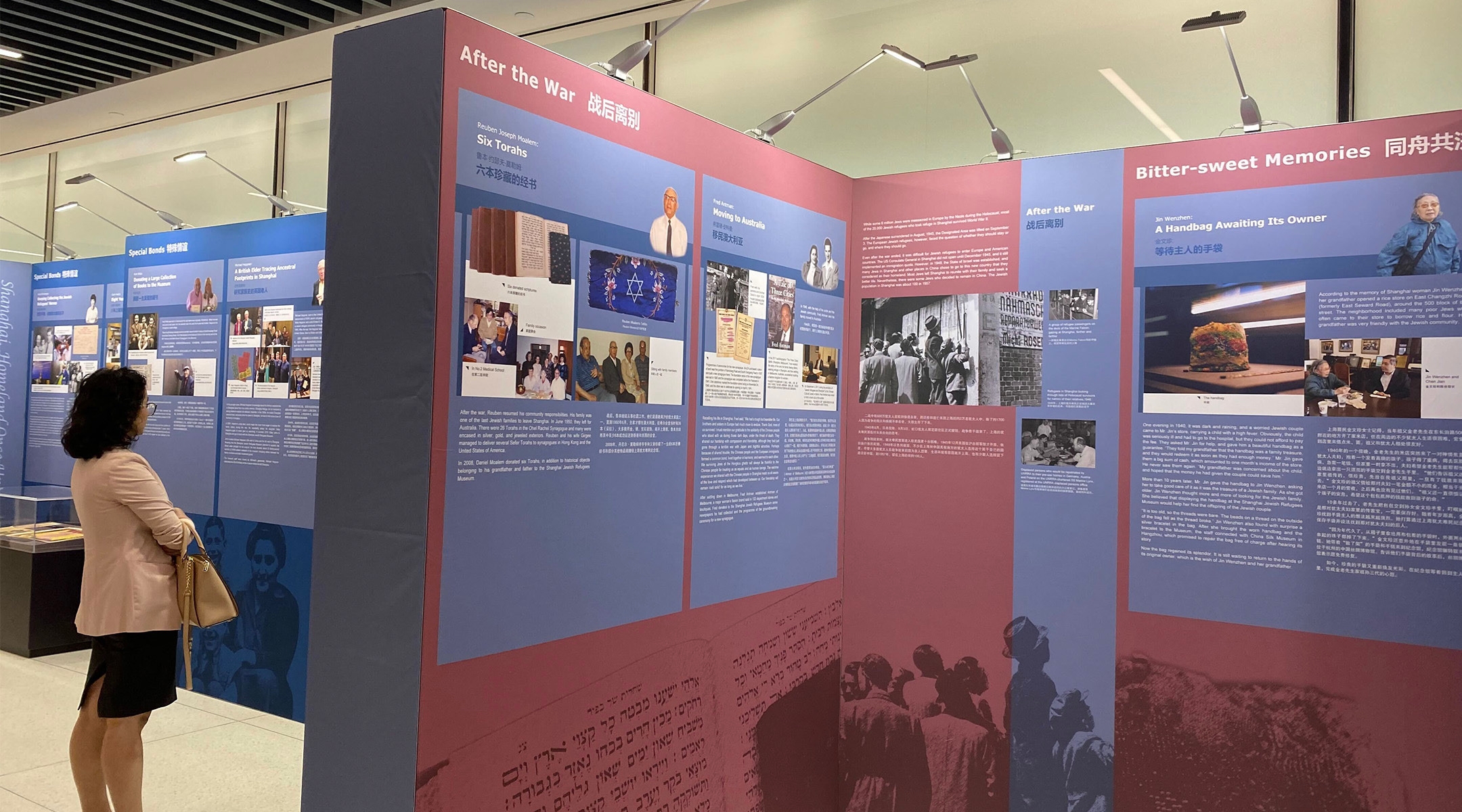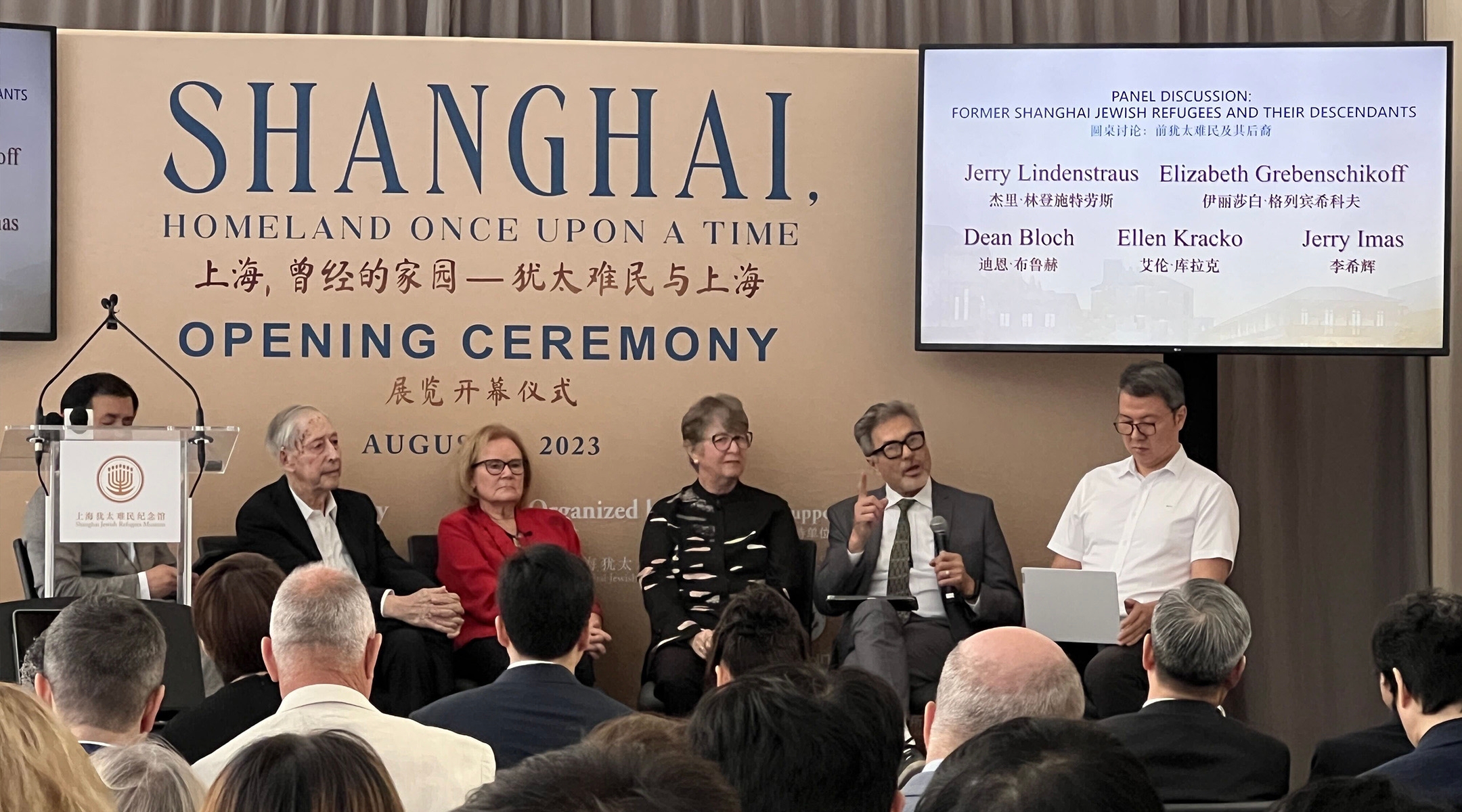(New York Jewish Week) — Visitors to a Lower Manhattan office building renamed to reflect a lucky number in Chinese tradition can, for the next few weeks, get a firsthand look at how China was once a fortunate destination for tens of thousands of Jews.
A temporary exhibit at 28 Liberty Street’s Fosun Plaza showcases the 20,000 Jews who took refuge in Shanghai between 1938 and 1941 to escape Nazi persecution. China was the only country with an open-door policy at the time, allowing Jews without an entry visa to settle there.
Family portraits of milestones and the mundane, candid shots of the Jewish Joint Distribution Committee handing out clothing, birth certificates, boat tickets, letters and more line colorful display walls at the exhibit, a pop-up satellite of the Shanghai Jewish Refugee Museum.
Jerry Lindenstraus, 94, fled to Shanghai with his family following Kristallnacht, and settled in Hongkew, one of the poorer areas near the port. He credits the Chinese people for the existence of his large family.
“If it wasn’t for Shanghai I wouldn’t be here and neither would they,” Lindenstraus said during an event this week kicking off the exhibit, which will be in place until Aug. 14.
The Shanghai museum was founded in 2007 and completed a major expansion in 2020. The new exhibit, titled “Shanghai, Homeland Once Upon a Time – Jewish Refugees and Shanghai,” draws on its collections to pull together more than 200 photographs and 30 pieces of replica memorabilia to tell the story of the brief period when the Chinese coastal city was a significant Jewish population center.
The exhibit features six sections: “Fleeing to Shanghai,” “Starting a New Life,” “Bittersweet Memories,” “After the War” and “New Look of the Homeland.”
Each section highlights excerpts from different refugees and or their descendants giving insight into their lives and experiences. In “Starting a New Life,” the exhibit highlights work in a tailor shop, the types of food eaten, arts, sports, music and Jewish education.
“Bitter Sweet Memories” includes reflections from life in the Shanghai ghetto, where the Jewish immigrants were forced to move in 1943, after the Nazis pressured the Japanese military, which had occupied Shanghai since 1937, to act against the Jews. Conditions and treatment in the ghetto were poor; the refugees could not come and go freely and had to carry resident certificates that identified them as Jewish.
“I must point out that the Chinese around us never called us dirty Jews or made antisemitic remarks. They just accepted us without question,” Elizabeth Grebenschikoff read from a speech at the event kickoff that her mother Betty, who died in February at 93, had written about her time living in Shanghai as a girl.
“After the War” shows Jewish people moving from China, and their reflections on Shanghai later in life are represented in “A New Look of the Homeland.” The exhibit also features a replica of “The Wall of Names of Jewish Refugees in Shanghai” found in the museum.

The exhibit features six sections that highlight different points in Jewish refugees’ lives in Shanghai. (Photo by Leah Breakstone)
The exhibit is situated in a private plaza that is part of a building owned by a Chinese investment company. Known for half a century as One Chase Manhattan Plaza, the building was renamed 28 Liberty Street after Fosun, the investment company, purchased it. The name, company officials explained at the time, is meant to conjure a double portion of luck, as represented in Chinese culture by the number eight.
A foundation associated with Fosun contributed to the costs of mounting the new exhibit, along with the Shanghai Diamond Exchange. Huang Ping, the Chinese consul general in New York; Chen Jian, director of the Shanghai Jewish Refugees Museum, and Jing Ying, vice president of Shanghai People’s Association for Friendship with Foreign Countries, gave speeches.
Other initiatives are underway or planned to “seek to keep alive the unique stories of the Jewish refugees,” according to a press release announcing the exhibit. They include the Chinese-Jewish Cultural Connection Center, a non-profit based in Shanghai that aims to connect remaining Jewish refugees and their descendents; a documentary; a collaboration between the Shanghai Symphony Orchestra and the New York Philharmonic, and a musical titled “Shanghai Sonatas,” about the music that helped Jewish refugees survive the war.
The exhibit is free and open to the public daily from 9 a.m. to 8 p.m. It closes Aug. 14.
The New York Jewish Week brings you the stories behind the headlines, keeping you connected to Jewish life in New York. Help sustain the reporting you trust by donating today.





